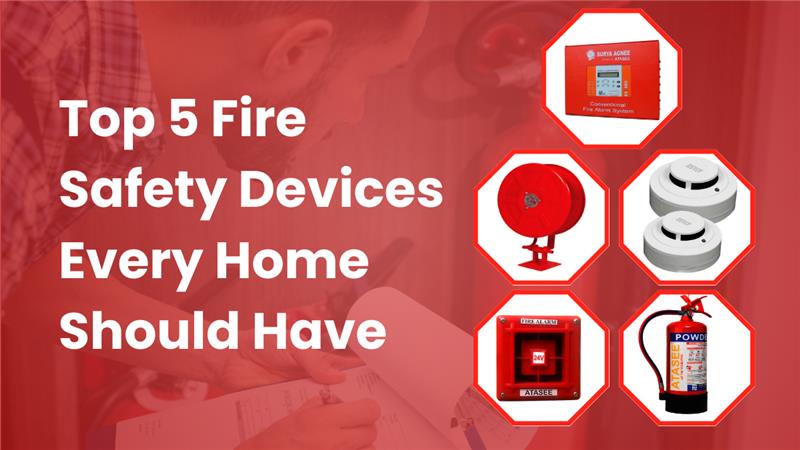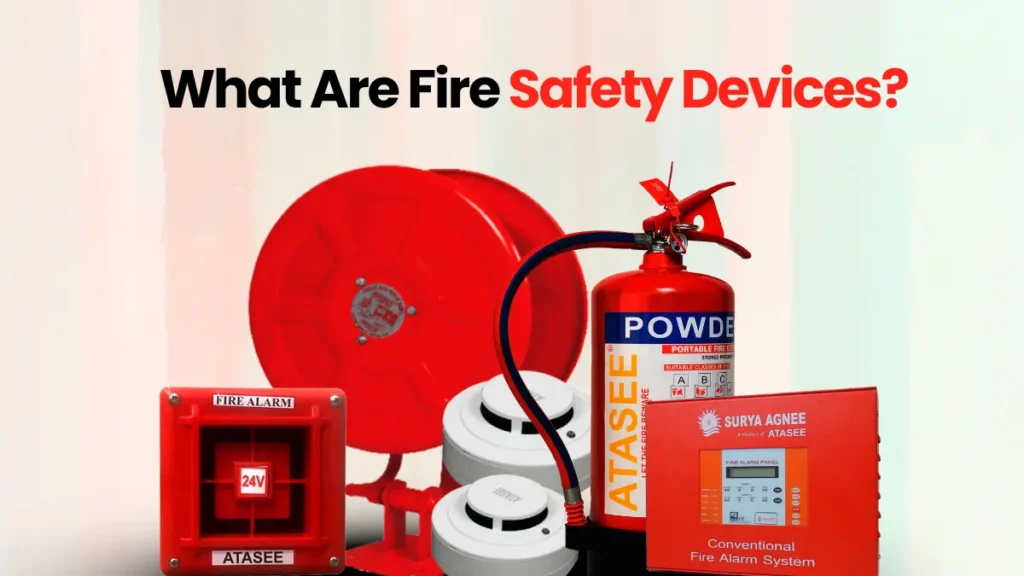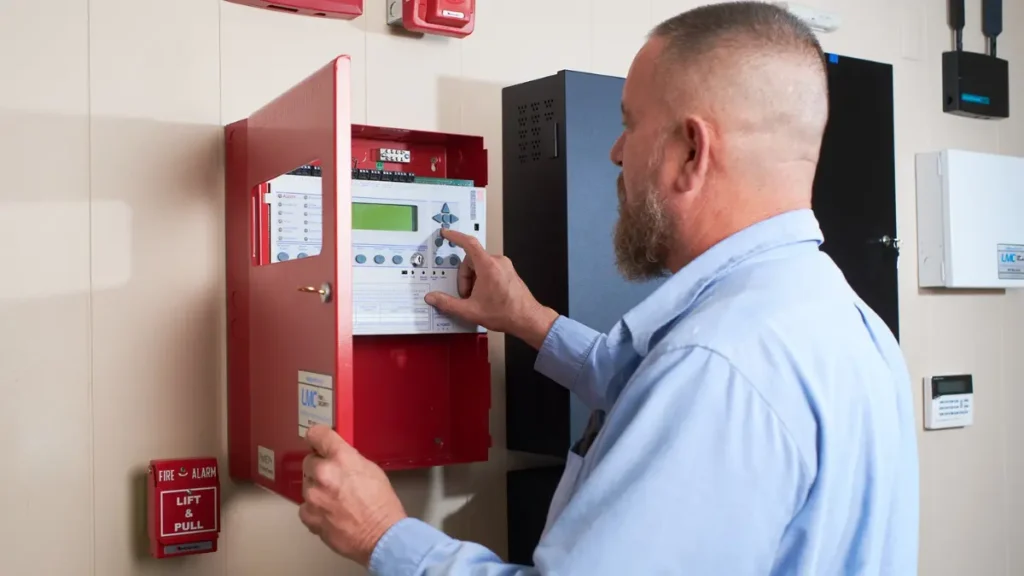
It is essential to ensure that your house is equipped with the important home safety devices and Fire Safety Devices equipment to protect you and your family from any incident. As a homeowner, it is your duty always to take proactive steps to safeguard everyone’s health and safety. It’s not just about having a beautiful or modern home—it’s about making sure the environment is safe and saved from potential dangers.
Think about it. Wouldn’t you sleep better knowing your house has all the right tools to warn you of danger? Consider investing in fire alarms or smoke detectors, carbon monoxide detectors, outdoor motion-sensor lights, and emergency lights. Each of these devices plays an important role in helping stop accidents or injuries.
If any of these items are missing from your home setup, it’s time to act. Don’t wait for an accident to happen. Buying and installing them as soon as possible gives you the peace of mind that you’ve done your part. Regular maintenance is also important—checking batteries, testing alarms, and replacing old devices ensures that everything works when you need it most. Remember, it’s always more useful to prepare and prevent than to repair and repent.
What is Fire Safety?
Fire safety is the set of practices planned to reduce the destruction caused by fire. It has measures to prevent fires from starting and systems to alert you if one does occur. In a household, this means being alert to fire hazards, having working safety equipment, and knowing what to do if flames break out.
Unfortunately, fire safety is usually ignored until a disaster happens. But once you understand how quickly a small flame can become a raging fire, you’ll notice the importance of preparation. Fire safety starts with awareness and ends with action. It has everything from keeping flammable items away from heat sources to installing devices that detect or fight fires.
Additionally, most local governments have fire safety regulations in place, especially for new constructions. These rules are designed to keep you safe, but as a homeowner, you must go beyond the basics. Teach your family about fire safety, set up emergency exits, and make sure every person in your home learns how to use the safety devices you’ve installed.
What Are Fire Safety Devices?

Fire safety devices are tools or systems designed to detect, alert, or control a fire. Some even help stop it. These devices are your first line of defense when it comes to keeping a fire from getting out of control. In many homes, simple devices like smoke alarms or extinguishers have already saved countless lives.
These devices come in many forms. Some, like smoke alarms and carbon monoxide detectors, give you early warning so you can escape or put out the fire before it spreads. Others, like fire extinguishers and blankets, help you fight small fires right away. Emergency lights guide your way when the power goes out or smoke makes it hard to see.
With technology advancing so rapidly, today’s fire safety gear is smarter and more reliable than ever. Many modern detectors come with Wi-Fi connectivity, allowing you to get alerts on your phone even when you’re not home. That way, you can act fast or call for help no matter where you are.
1. Smoke Alarms
A small device with a big job—smoke alarms are your first and best defense against fires. They detect smoke particles in the air and sound a loud alarm to alert you. Early detection is important. Fires can spread fast, but with a smoke alarm, you can catch the danger in its early stages, giving you and your family time to escape.
You should install smoke alarms in every bedroom, hallway, and on each floor of your home. Don’t forget high-risk areas like the kitchen or near fireplaces. And yes, they should be installed even if you’re living in a rental. Smoke alarms don’t cost much, and some are easy to mount yourself. Just peel, stick, or screw them in place and they’re good to go.
Battery maintenance is also critical. Make it a habit to test each alarm once a month and replace the batteries twice a year. A good tip is to check them when you change your clocks for daylight saving time. If you hear a chirping sound, it means the battery is low and needs to be replaced immediately.
2. Fire Extinguishers
A fire extinguisher is another must-have safety device that can stop a fire before it turns into a disaster. Every home should have at least one fire extinguisher, but ideally, you should have multiple—especially in high-risk areas like the kitchen, garage, and near fireplaces or heating equipment.
This tool is designed to tackle small fires—ones that are just starting and haven’t spread yet. For example, if there’s a sudden flare-up while cooking, a fire extinguisher can put it out quickly. But using it properly is key. You need to remember the PASS technique: Pull the pin, Aim at the base of the fire, Squeeze the handle, and Sweep side to side.
There are different types of extinguishers, each designed for specific kinds of fires:
- Class A: For ordinary combustibles like paper or wood.
- Class B: For flammable liquids like oil and gasoline.
- Class C: For electrical fires.
- Multi-purpose (ABC): Covers most household fire risks.
Always read the label before buying one and make sure it’s suitable for your home. Also, check the pressure gauge regularly, keep it in an easily accessible location, and ensure everyone in the family knows where it is and how to use it.
More importantly, don’t try to be a hero with a large fire. If it’s spreading quickly, your best bet is to get out and call emergency services. Fire extinguishers are most effective when used on small, contained fires. Keep calm, act fast, and always prioritize safety over possessions.
3. Carbon Monoxide Detectors
Carbon monoxide (CO) is a deadly gas that you can’t see, smell, or taste. It’s often called the “silent killer” for this very reason. When inhaled, it replaces the oxygen in your bloodstream, which can lead to serious health problems or even death, especially if you’re asleep and unaware of its presence.
That’s where carbon monoxide detectors come in. These life-saving devices sense the presence of CO gas and trigger an alarm before levels become dangerous. They’re especially important in homes with gas stoves, furnaces, water heaters, fireplaces, or attached garages where car fumes can seep into the house.
You should install CO detectors in sleeping areas and near gas appliances. Place them on walls at least five feet above the floor or on the ceiling, since CO mixes evenly with air. Many newer detectors are combination units that also detect smoke, giving you two layers of protection in one device.
Just like smoke alarms, carbon monoxide detectors need regular testing. Make it part of your monthly home maintenance routine. Also, replace the batteries twice a year and the entire unit every 5 to 7 years, depending on the manufacturer’s instructions.
Never ignore a carbon monoxide alarm. If it goes off, leave the house immediately and call emergency services. Open all windows and doors to ventilate the space if it’s safe to do so. This simple tool could save your life and the lives of your loved ones.
4. Fire Blankets
Fire blankets are one of the most underrated fire safety tools, but they are incredibly effective, especially for kitchen fires. Made from fire-resistant material, a fire blanket can smother flames by cutting off the oxygen supply, which stops the fire from spreading.
They are especially useful when dealing with fires involving cooking oil or grease, which should never be extinguished with water. Simply pull the blanket out of its case, hold it in front of you to protect yourself, and place it gently over the fire. Then, turn off the heat source and leave the blanket in place until the area cools down.
Another important use for fire blankets is in personal emergencies. If someone’s clothing catches fire, wrapping them in a fire blanket can help extinguish the flames quickly and safely. It’s a simple but powerful tool to have in your fire safety arsenal.
Where should you keep one? The kitchen is the most obvious spot, but it’s also helpful to place one in the garage or any room with electrical equipment. Mount it on the wall or inside a cabinet so it’s easy to grab during a crisis.
Fire blankets don’t expire and don’t require much maintenance. Just make sure they are always accessible and that every family member knows where to find and how to use them. Practicing this as part of a fire drill can make a big difference during real emergencies.
5. Emergency Lights
Imagine trying to find your way out of a smoky house or down a dark staircase during a power outage. Emergency lights make this task not just easier, but also safer. These lights switch on automatically when the power goes out, guiding you toward the exits.
They are especially critical for multi-story homes where navigating stairs in the dark can lead to injuries. Install emergency lights in hallways, stairwells, basements, and any high-traffic areas. You can even get models with built-in battery backups or solar-powered versions for better energy efficiency.
There are several types of emergency lights:
- Surface-mounted strips – Great for hallways and staircases.
- Track lighting – Useful for broader areas.
- Recessed downlights – Ideal for living spaces where you want aesthetics to meet functionality.
In addition to lighting up your path during a blackout, emergency lights can highlight fire exits or emergency supplies. Some models come with built-in alarms that also sound during a fire or carbon monoxide leak, adding an extra layer of protection.
When choosing emergency lighting, always check your local building codes. Some regions require specific placements or features for legal compliance. Once installed, test them every month and replace batteries or bulbs as needed. Being left in the dark during an emergency is dangerous—emergency lighting ensures you’re never without direction when it matters most.
Additional Fire Safety Tips
Regular Equipment Checks

Having fire safety equipment in your home is only half the battle. The other half? Regular maintenance. You need to check each piece of equipment frequently to ensure it works properly when needed. Just like you wouldn’t drive a car without checking the tires or brakes, you shouldn’t assume your safety tools are always ready to go.
Start by setting a monthly reminder on your phone or calendar to inspect all your fire safety devices. Test your smoke alarms and carbon monoxide detectors to make sure they beep loudly. Most of these have a “test” button you can press. If the sound is weak or doesn’t play at all, it’s time for new batteries—or even a new device.
For fire extinguishers, check the pressure gauge to ensure the needle is in the green zone. If it’s not, the extinguisher might not discharge properly. Also, look for signs of wear or corrosion, and shake the unit gently to prevent the powder inside from settling. Fire blankets should remain sealed and clean; any visible damage may mean they need replacing.
Emergency lights need to be tested, too. If they run on batteries, make sure those are fresh. If they’re wired into your electrical system, a licensed electrician can help test and maintain them. The goal is to make sure everything is in working order before a crisis, not during one.
Remember, all devices have a shelf life. Smoke detectors should be replaced every 10 years, carbon monoxide detectors every 5-7 years, and extinguishers every 10-12 years unless used or damaged. Keeping a small checklist in your utility drawer or using an app can help you track what needs maintenance and when. A few minutes each month can make the difference between a near-miss and a tragedy.
Home Safety Drills
One of the most important but overlooked aspects of home fire safety is planning and practicing what to do during an emergency. That’s where home safety drills come into play. They’re simple to set up, don’t take much time, and could save your life.
Start by creating a home fire escape plan. Walk through your house with your family and identify at least two exits from every room. These could be doors or windows. Then, choose a safe meeting point outside, like a neighbor’s driveway or a big tree across the street. This is where everyone should gather after escaping the house.
Next, practice the plan. Pretend there’s a fire and go through the motions: get low to avoid smoke, use back-of-hand checks on doors to see if they’re hot, and exit the house as quickly as possible. Don’t forget to time the drill. The goal is to get everyone out in under two minutes.
Teach kids how to unlock windows and use emergency ladders if you live in a two-story home. Make sure they understand not to hide under beds or in closets—common behaviors when young children are scared. If you have pets, assign someone to be responsible for them during the drill, but remind everyone that their safety comes first.
Repeat the drill at least twice a year. Change it up—run one during the day and one at night. This helps your family get used to reacting no matter when a fire occurs. Keep the mood light so kids stay engaged, but be clear about the seriousness of the exercise.
A good safety drill makes people more confident and less likely to panic during a real fire. It turns fear into action—and action saves lives.
Benefits of Fire Safety Equipment
Insurance Perks
Most people don’t know this, but having fire safety devices in your home can reduce your insurance costs. Smoke detectors, fire extinguishers, and carbon monoxide alarms make your home safer—and insurance companies like that. Some even give you discounts just for having them.
If you add smart devices that alert emergency services or send you phone alerts, you might save even more. It’s smart, and really, you protect your family and save money. Just make sure to keep everything maintained and let your insurance agent know what safety steps you’ve taken.
Peace of Mind
Knowing your home is ready for anything brings real peace of mind. You can sleep better at night, knowing smoke alarms are working and emergency lights will turn on if needed. It makes your family feel safer, too. No more worrying about what could happen—you’ve already prepared.
Property Insurance and Fire Protection
Even with all the right gear, accidents happen. That’s why having solid home insurance matters. It helps cover repair costs and protects your belongings if fire damages your home. The best part? When you show that your home has safety gear, your insurance company may process your claim faster.
Update your policy whenever you make changes to your home. Insurance, combined with the right fire safety tools, gives you total protection. You hope you’ll never need it—but if you do, you’ll be glad it’s there.
Frequently Asked Questions
How often should I replace smoke alarm batteries?
You should replace the batteries in your smoke alarm at least twice a year. A good reminder is to do it when you change your clocks for daylight saving time. Also, test the alarms every month to make sure they’re working.
Can I install fire safety equipment by myself?
Yes, many fire safety devices are designed for easy DIY installation, including smoke detectors and fire blankets. However, for hardwired alarms, emergency lighting, or complex systems, you may want to hire a professional.
What is the best place to install carbon monoxide detectors?
Place carbon monoxide detectors near sleeping areas and gas appliances. They should be installed at least 5 feet above the floor or on the ceiling, where the gas is likely to accumulate.
Are fire blankets reusable?
No, most fire blankets are designed for one-time use only. Once they’ve been used to extinguish a fire, they should be replaced, even if they look intact.
Conclusion
Fire safety isn’t extra—it’s important. Devices like smoke alarms, fire extinguishers, and emergency lights save your home and everyone in it. They give you time to react and reduce the risk of major harm.
Take a few minutes today to check your safety setup. Add what’s missing, replace what’s old, and teach your family how to use each tool. Protecting your home starts with you, and a few smart choices can make all the difference.
Every second counts during a fire. Don’t delay—install these 5 life-saving devices today and give your family the protection they deserve.
👉 Browse Fire Safety Solutions Now
Contact Us: +91 94172 77276
Email: ataseefireindutries@gmail.com
Address: Jawaharpur, Derabassi, Mohali


